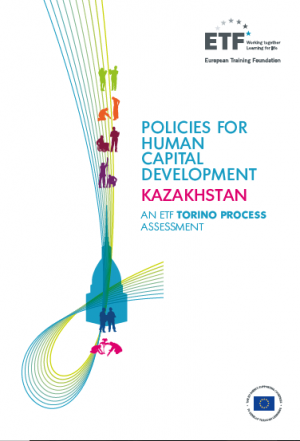This ETF assessment was prepared in 2019 on behalf of national authorities in Kazakhstan using a standardised framework questionnaire for national reporting (national reporting framework).
The assessment process included an extensive phase of desk research based on information provided by Kazakhstan in its national Torino Process report, and the preparation of an Issues Paper with an overview of themes to be discussed in the present report. These were then finalised in consultation with the ETF country and thematic teams responsible for Kazakhstan at the ETF. An advanced draft of the ETF assessment was circulated to national stakeholders and international partners and discussed at a consultation meeting in Nur-Sultan on 10 December 2019 to verify the findings and recommendations.
Like other ETF assessments, this paper is not meant to be exhaustive. The national Torino Process report of Kazakhstan covers a broad selection of problems around human capital development and use, while the focus here is on challenges which the ETF recommends addressing as a matter of priority.
The main question this report intends to answer is whether the long-standing, considerable financial and political investment made by Kazakhstan in the area of human capital development and VET, as well as its achievements in relation to reform in this area, are wide-reaching and deep enough to bring the country closer to its ambitious, long-term goal of becoming one of the most competitive economies in the world by 2050. While there is ample evidence to suggest that Kazakhstan is on track to achieve this, this assessment also draws attention to three major challenges and numerous policy-related gaps around each challenge, which may create risks further down the road by slowing down the pace of positive change and undermining its sustainability and impact.
These challenges include the ineffective distribution and use of state-sponsored opportunities for human capital development through VET (discussed in Section 3.1[7] The report may use “Section” and “Chapter” interchangeably.
); the unsatisfactory quality and limited relevance of teaching and learning in VET, which hampers the anticipated contribution of VET to the strategic development of the country (Section 3.2); and deficiencies in workforce development caused by a lack of adult education (Section 3.3).
Before that, in Section 2, the ETF assessment provides an overview of basic human capital development indicators (Section 2.1) and highlights three more, closely associated challenges. These include gaps in migration and labour market policy leading to brain drain (Section 2.2); risks in the cultivation of ICT talent due to human resource shortages (Section 2.3); and a shortage of VET specialists as an impediment to human capital development (Section 2.4).
Section 4 concludes the assessment and is followed by annexes summarising the policy recommendations (Annex 1) and offering a short overview of the education and training system (Annex 2).

